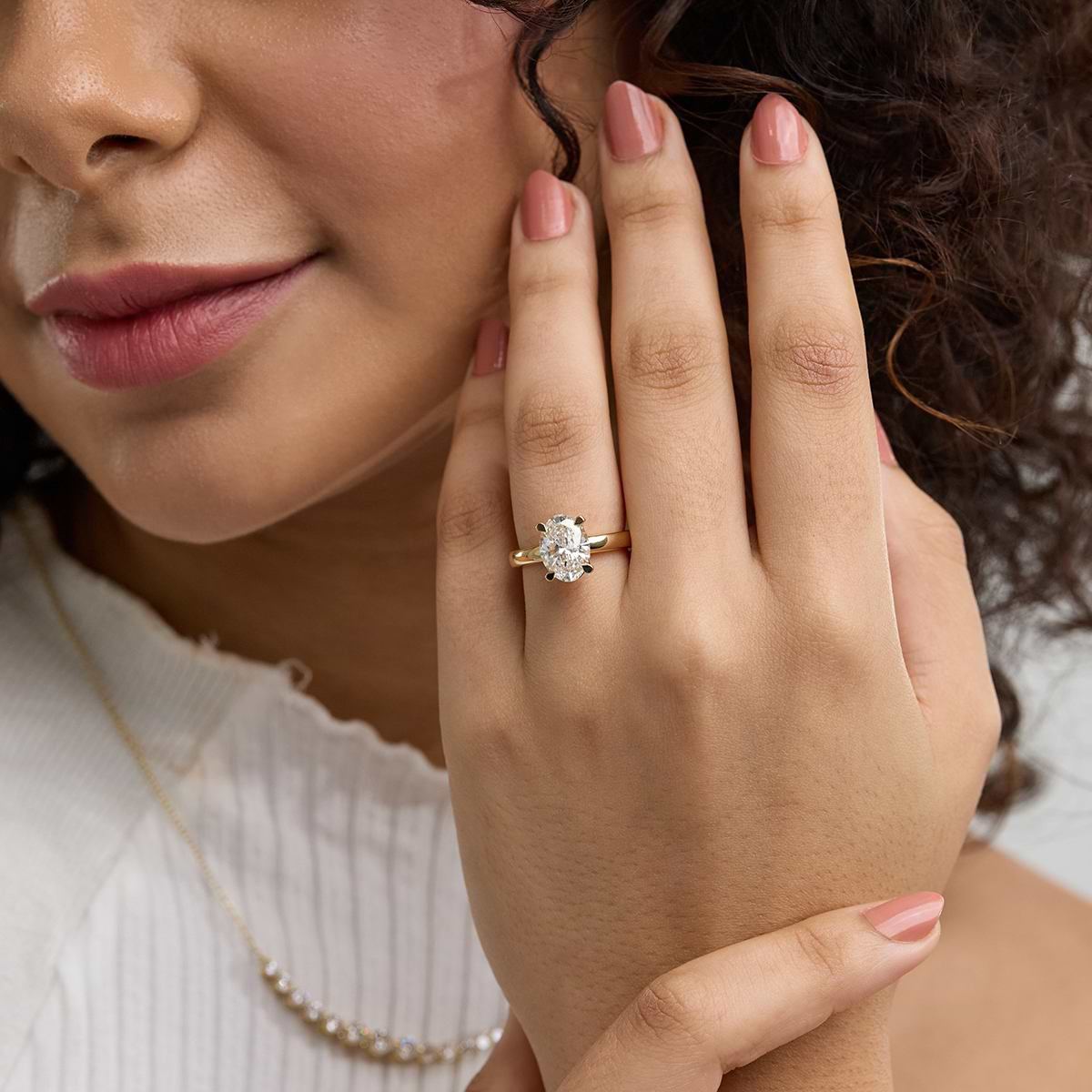When shopping for an engagement ring or fine jewelry, one of the biggest decisions you’ll face is choosing between Moissanite vs Diamond. With the rise of man-made diamonds, the options have expanded even further. Each gemstone has its own set of qualities, advantages, and drawbacks. This guide will help you understand the key differences between moissanite, natural diamonds, and lab-grown diamonds so you can make the best decision for your needs.
What is Moissanite?
Moissanite is a gemstone that was originally discovered in a meteor crater by French scientist Henri Moissan in 1893. Naturally occurring moissanite is incredibly rare, so all moissanite used in jewelry today is lab-created.
Moissanite is composed of silicon carbide and is known for its exceptional brilliance and fire. Due to its high refractive index, moissanite often sparkles more than diamonds, making it an attractive option for those who love a dazzling stone at an affordable price.
What are Diamonds?
Diamonds are carbon-based gemstones that form under high-pressure conditions deep within the Earth’s crust. They have been prized for centuries due to their durability, beauty, and rarity.
There are two types of diamonds available today:
Natural Diamonds – Mined from the earth, these diamonds are billions of years old and are considered the traditional choice for engagement rings.
Man-Made Diamonds (Lab-Grown Diamonds) – These diamonds are created in laboratories using advanced technology that replicates the natural diamond formation process. They are chemically, physically, and optically identical to natural diamonds but are more affordable and ethically sourced.
Moissanite vs Diamond: Key Differences
1. Brilliance and Sparkle
Moissanite has a higher refractive index (2.65) compared to diamonds (2.42). This means moissanite reflects more light, producing a rainbow-like sparkle that some people love, while others prefer the classic white brilliance of a diamond.
2. Hardness and Durability
Diamonds are the hardest known natural substance, ranking 10 on the Mohs hardness scale. Moissanite ranks slightly lower at 9.25, making it a durable gemstone that can withstand everyday wear. However, diamonds are still the superior choice if you’re looking for maximum hardness and scratch resistance.
3. Price and Affordability
One of the biggest advantages of moissanite is its cost. A high-quality moissanite stone costs a fraction of the price of a diamond of the same size and appearance. Lab-grown diamonds are also more affordable than natural diamonds but still more expensive than moissanite.
4. Ethical and Environmental Impact
Many consumers today are concerned about the environmental and ethical implications of mining natural diamonds. Both moissanite and man made diamonds offer a more sustainable and ethical alternative:
Moissanite is entirely lab-created, making it a conflict-free gemstone.
Man-made diamonds require less environmental disruption than traditional diamond mining.
5. Appearance and Color
Moissanite and diamonds have different visual qualities:
Moissanite has a distinct rainbow-like sparkle, while diamonds display more white light.
While most moissanite appears near-colorless, some stones may have a slight yellow or gray tint.
Lab-grown diamonds can be created in various colors, including colorless, pink, blue, and yellow.
Pros and Cons of Moissanite vs Diamonds
Here’s a quick comparison of moissanite, natural diamonds, and lab-grown diamonds to help with your decision:
✔ Moissanite:
More affordable than diamonds
Brilliant sparkle with rainbow-like flashes
Durable and suitable for daily wear
Ethically sourced and environmentally friendly
✖ Moissanite:
Has a different sparkle than diamonds, which some may not prefer
Can have a slight yellow or gray tint in certain lighting
✔ Natural Diamonds:
Timeless and classic appearance
Highest level of hardness and durability
Considered a long-term investment
✖ Natural Diamonds:
Expensive compared to moissanite and lab-grown diamonds
Ethical concerns related to mining
✔ Lab-Grown Diamonds:
Identical in appearance and composition to natural diamonds
More affordable and ethically sourced
Available in a variety of colors
✖ Lab-Grown Diamonds:
Not as rare as natural diamonds, which may affect resale value
Which One Should You Choose?
Your choice between moissanite, natural diamonds, and lab-grown diamonds depends on your personal preferences and priorities:
If you want the most sparkle for your budget, moissanite is an excellent choice.
If you value tradition and investment, a natural diamond might be the best option.
If you prefer an ethical, high-quality diamond at a lower price, lab-grown diamonds are worth considering.
Each gemstone has its unique appeal, and the best choice ultimately depends on what matters most to you—whether it’s brilliance, budget, sustainability, or symbolism. No matter what you choose, both moissanite and diamonds make stunning and meaningful jewelry pieces.





